No, it’s neither fake nor photoshopped! These Moroccan climbing goats aren’t your normal, pasture-grazing goats you usually get to see in other parts of the world. On my way from Marrakech to Essaouira I had the chance to encounter these climbing goats slowly chewing the argan seeds and grazing. On average, these goats graze on argan trees 387 minutes per day. That's over 6 hours! Or at least this is what a study dated back to 2007 on the ingestive behavior of goats grazing in the Southwestern Argan (Argania spinosa) forest of Morocco says.
The story of the climbing goats
This unusual phenomenon mostly happens in the semi-deserts of southwest Morocco, where the argan tree grows. It’s an arid area that doesn’t get a lot of rain and therefore the only food the goats can find is on top of evergreen shrubs and trees. In the fall, these tree-climbing goats devote more than 70 percent of their eating time to “treetop grazing.” These quirky Moroccan goats have no problem scampering out on argan branches, 30 feet off the ground, in search of the tree's delicious fruit. Probably, they also feel the benefits of argan kernels rich in fatty acids, antioxidants, vitamins (especially Vitamin A and Vitamin E) and minerals.
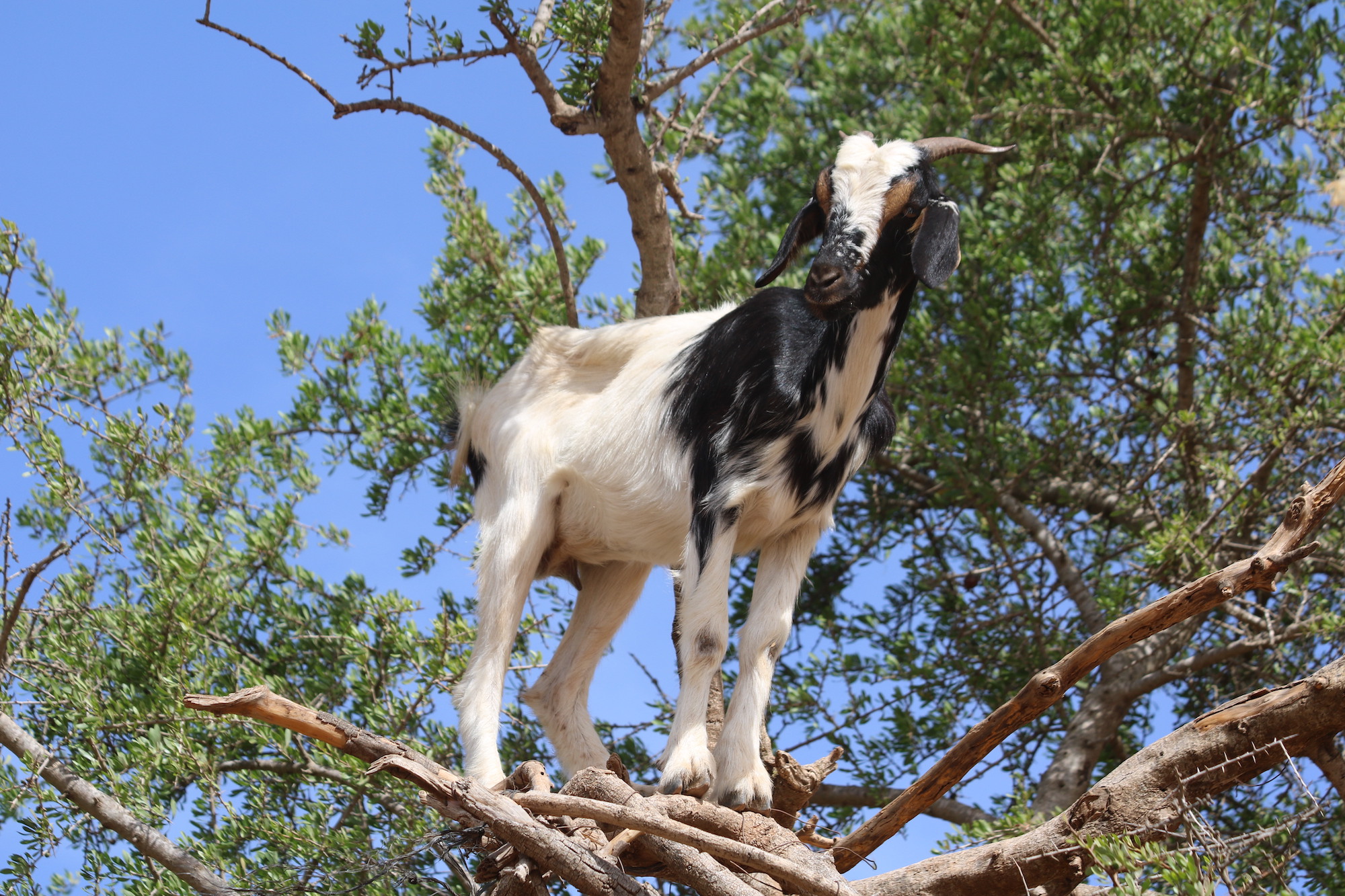
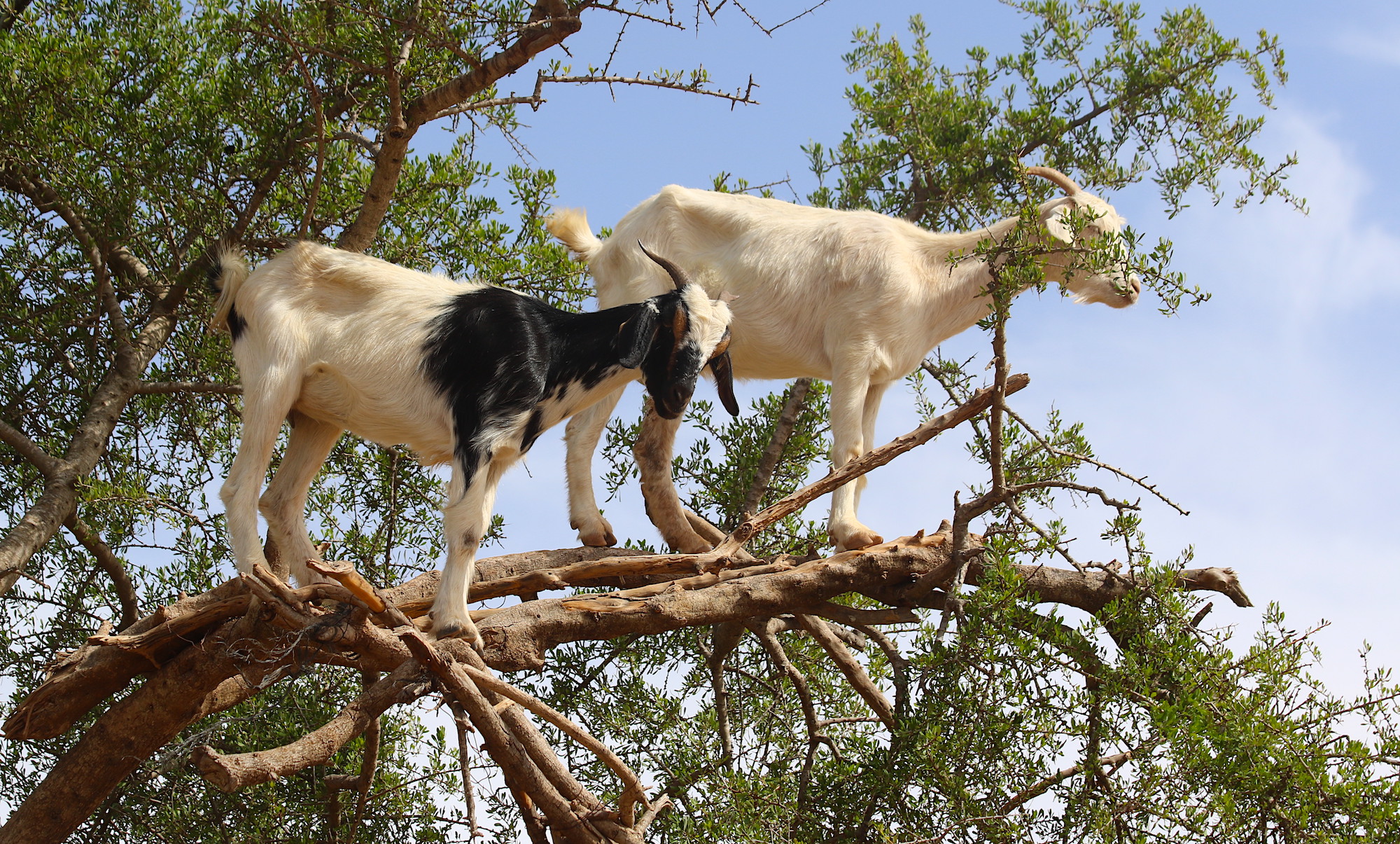
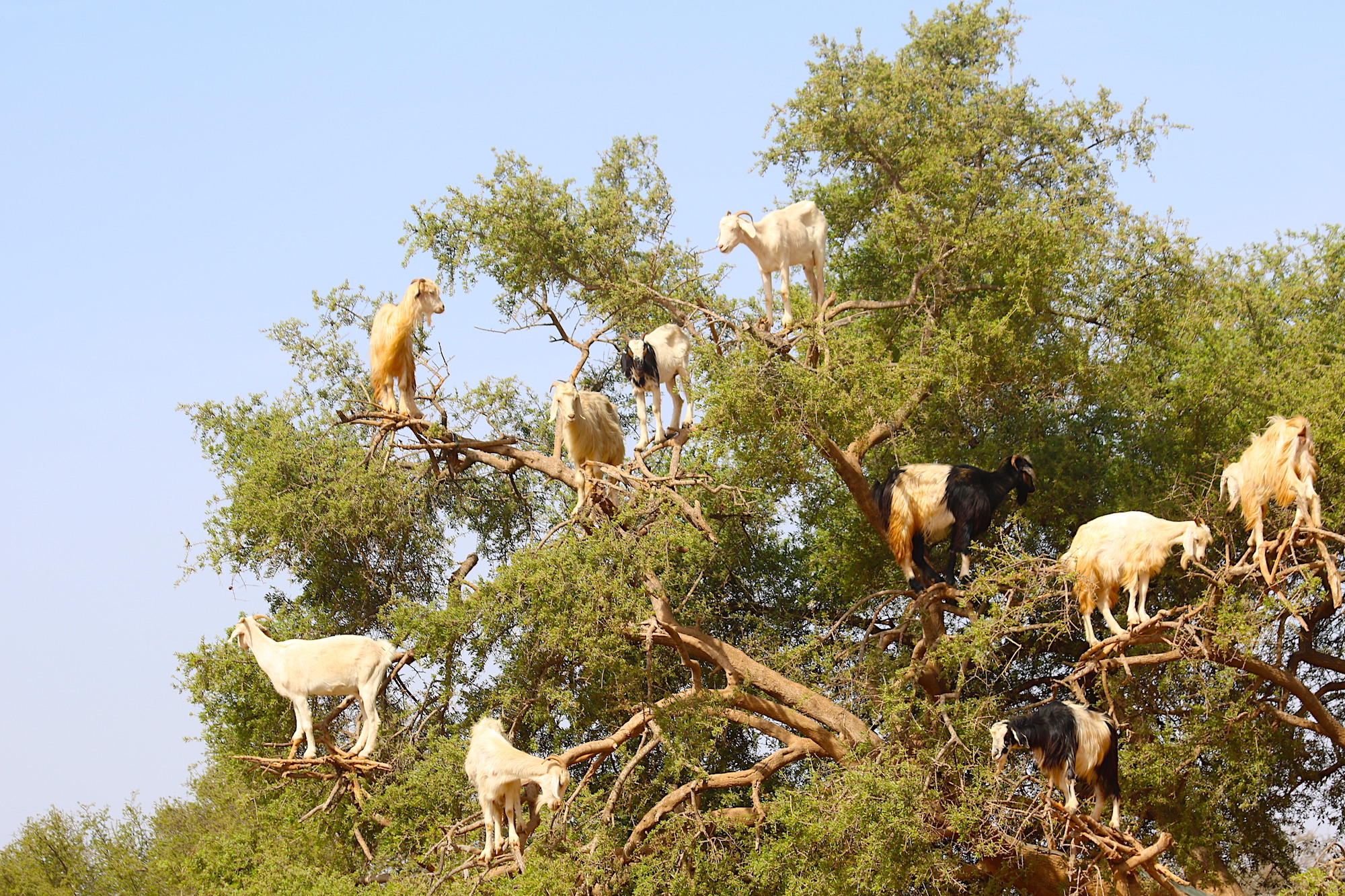
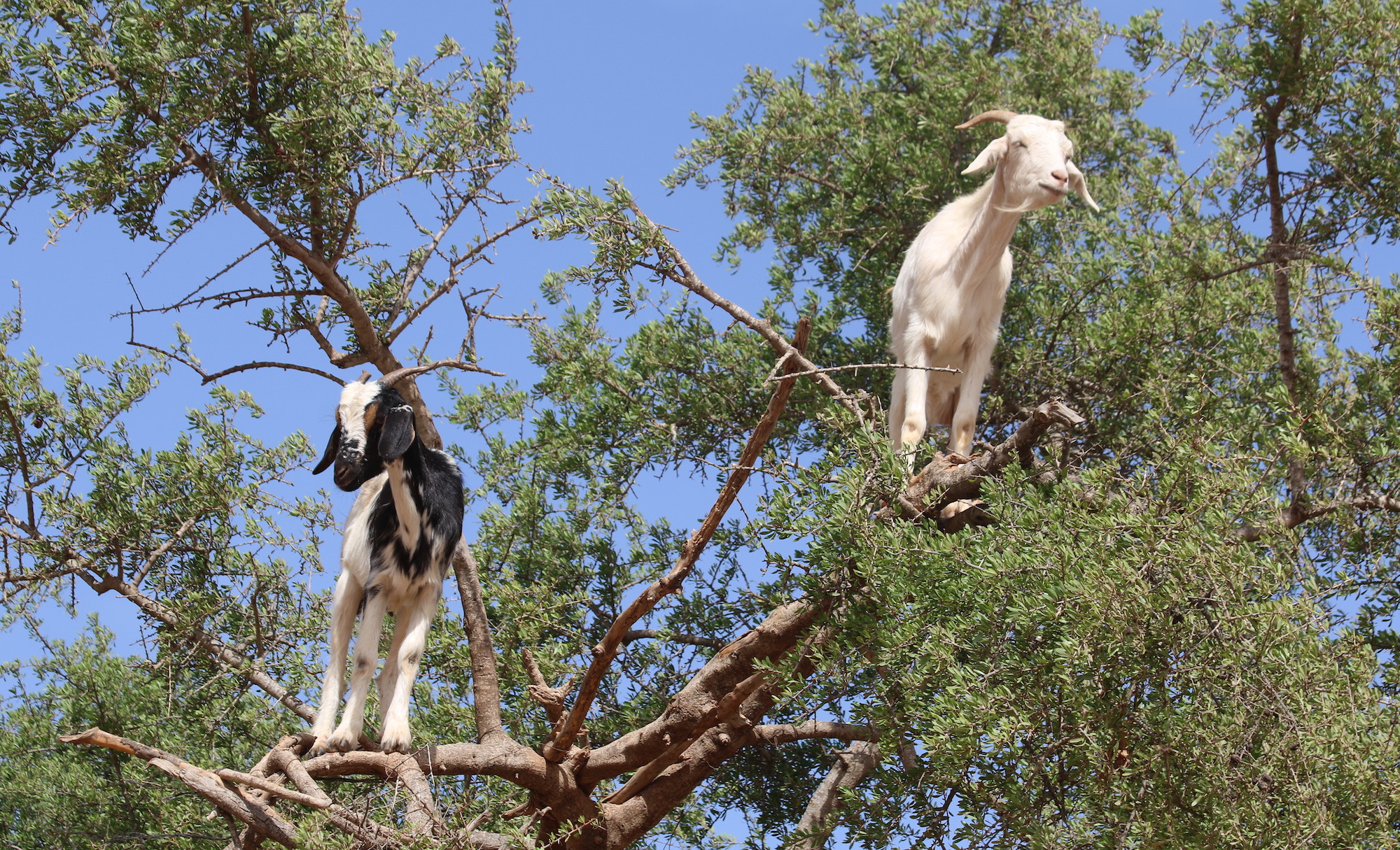
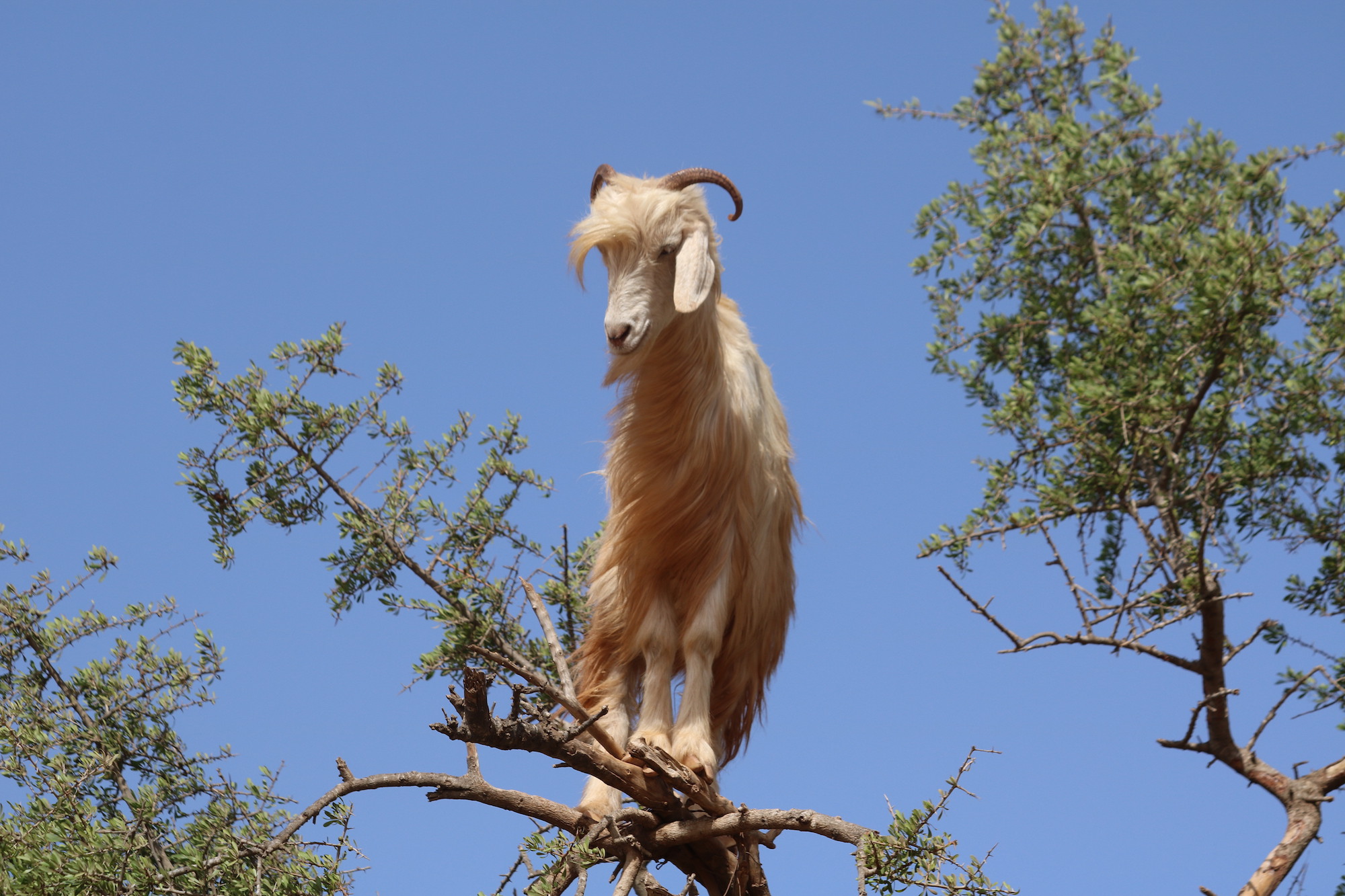
Trust me when I tell you, it’s not just one crazy or disoriented goat who hops up into the branches to pick out the fruits. The climbing goats tend to swarm into the branches giving us quite a spectacular scene to see.
How is this possible, you may wonder? How does a goat climb a tree? Well, they go very slowly and they do it. They are so good, they rarely fall. On the other hand, it is known that some local goat keepers cut some branches off the trees, so the goats can start climbing the trees more easily. In the best-case scenario, this happens to help the goats. In the worst-case scenario, there are local scammers tying to get the goats in the trees under the hot desert sun, just to make a buck from the tourists stopping to take pictures.
Are the climbing goats agricultural heroes?
So yes, the goats climb in the trees, gaze at the horizon and eat the argan seeds. But what happens with the precious seeds? There are two answers to this question. First, the small seeds can go through the goat's stomach and intestine and get out without damage. The seeds are not picked out of the poop and processed for getting the oil turn into trees. That’s why, in a way, the goats seed, so to say, new argan trees and that’s a good thing.
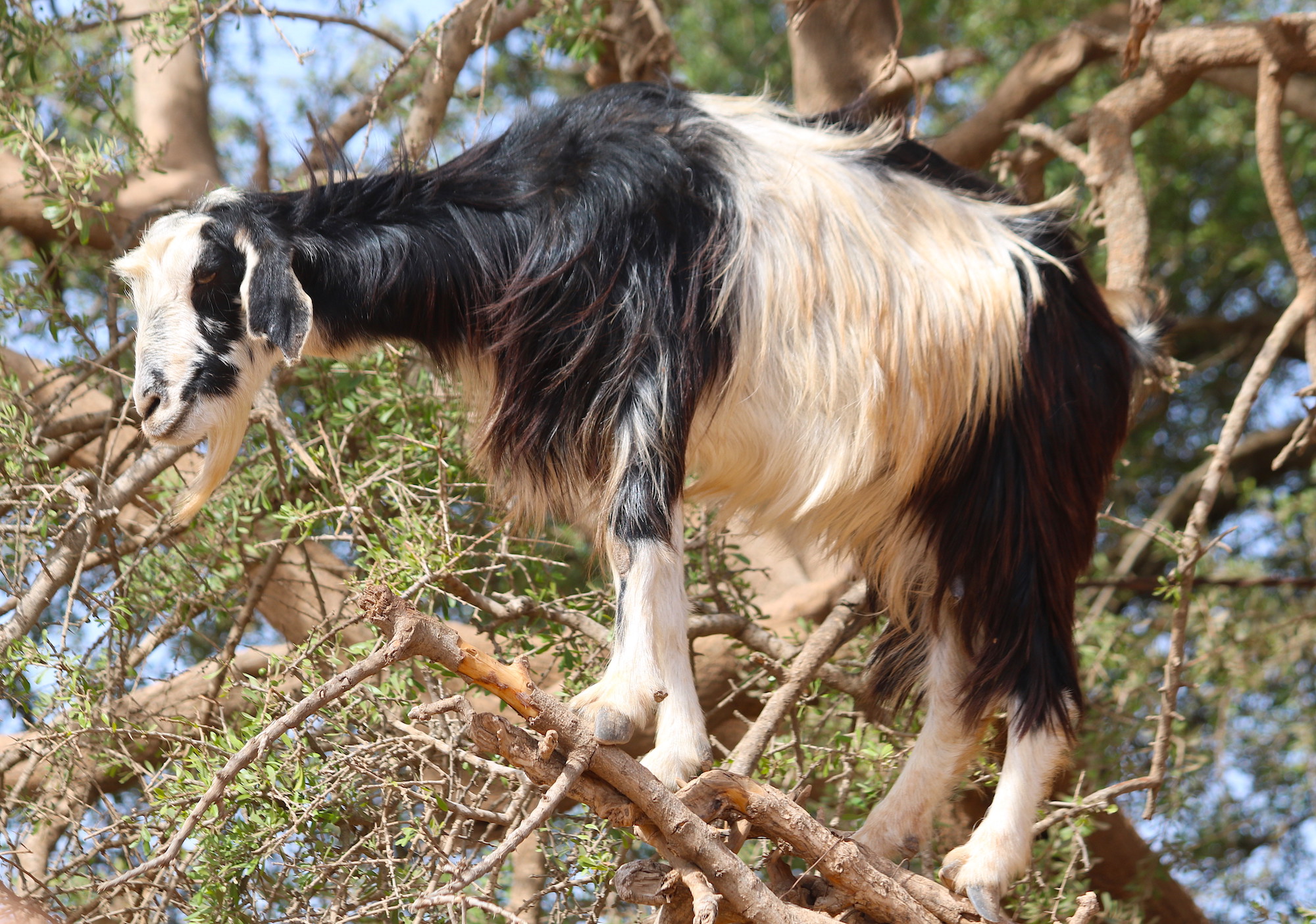

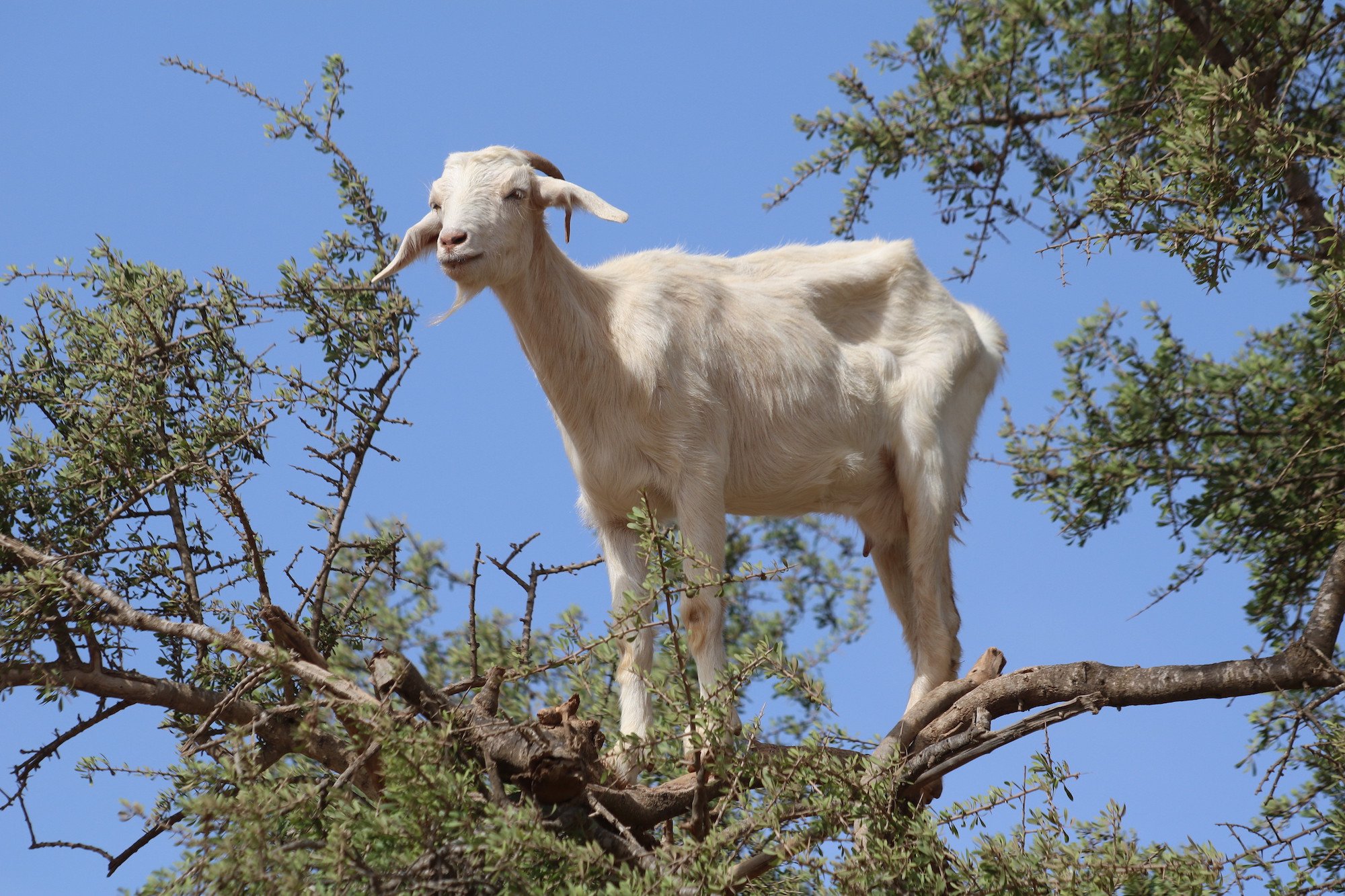
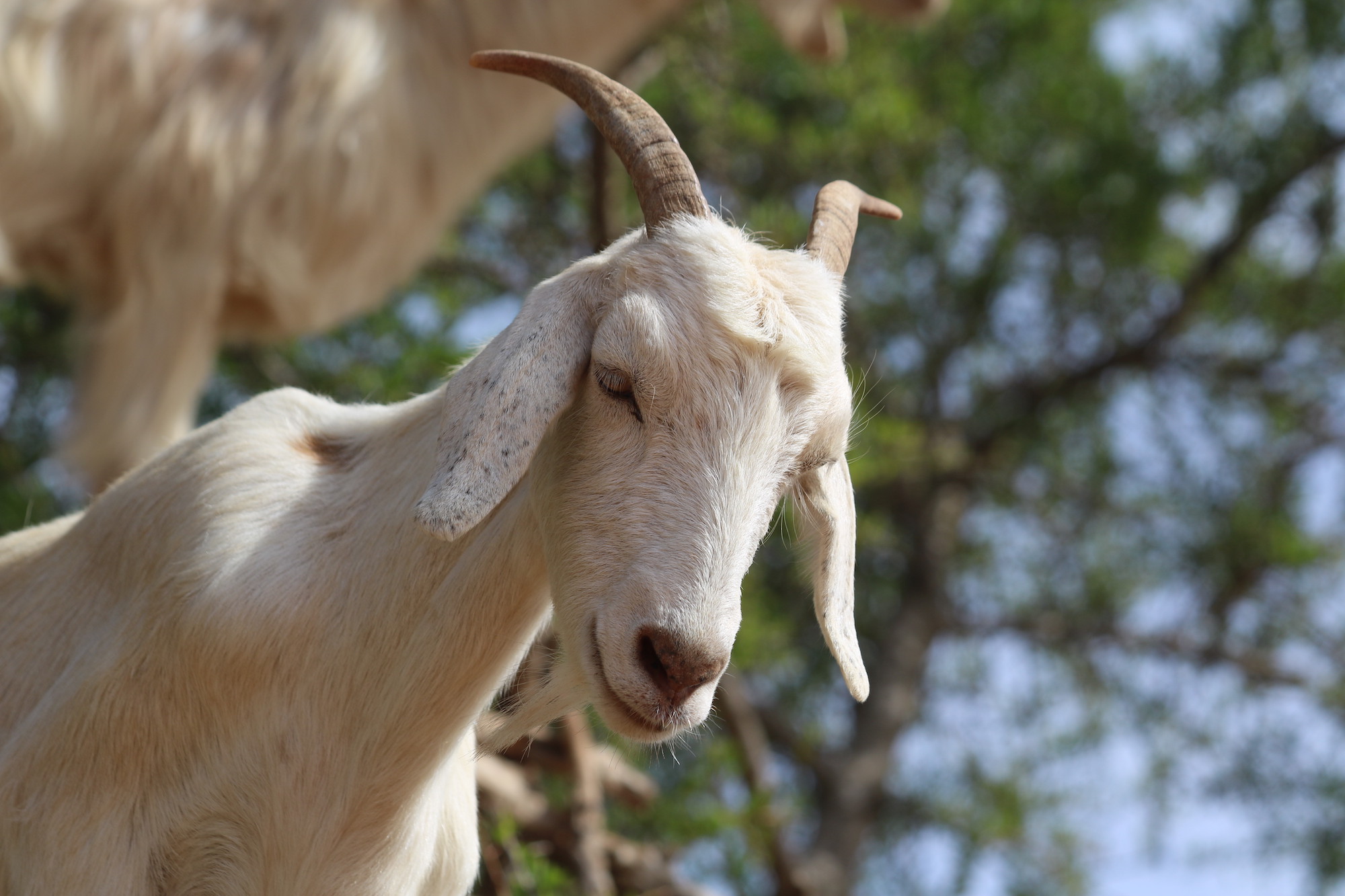
The problem is with the larger size seeds that are split into small pieces or completely destroyed. And that’s too bad as you know how precious the argan trees are! Leaving aside the irony and the fun of it, as biologist and ecologist Jose Fedriani, one of the co-authors of "Tree-climbing goats disperse seeds during rumination" study published in Frontiers in Ecology and the Environment said, there’s a real danger in having large numbers of goats eating the new baby trees. And that not a very sustainable process even though the goats are kept away from the trees until the fruit is ripe.
Argan - the gold of the Morrocan desert
Argania spinosa or the Argan tree grows in southwestern Morocco and a small section of western Algeria. Moroccans would tell you this is the best argan oil in the world and they aren’t far from the truth.
Argania spinosa once covered North, unfortunately today is a rare and protected species after years of over-farming and clear-cutting. The Argan tree is the defining species for its eco-region, on which over 1,200 other plants and animal species depend, 140 of which are endemic. This is the reason why back in 1998 the Argan forest in Morocco was designated a protected biosphere by UNESCO. Located in the southwest of Morocco, the Arganerie Biosphere Reserve covers a vast region of over 2.560.000 hectares, bordered by the High Atlas and Anti-Atlas Mountains and open to the Atlantic to the west.


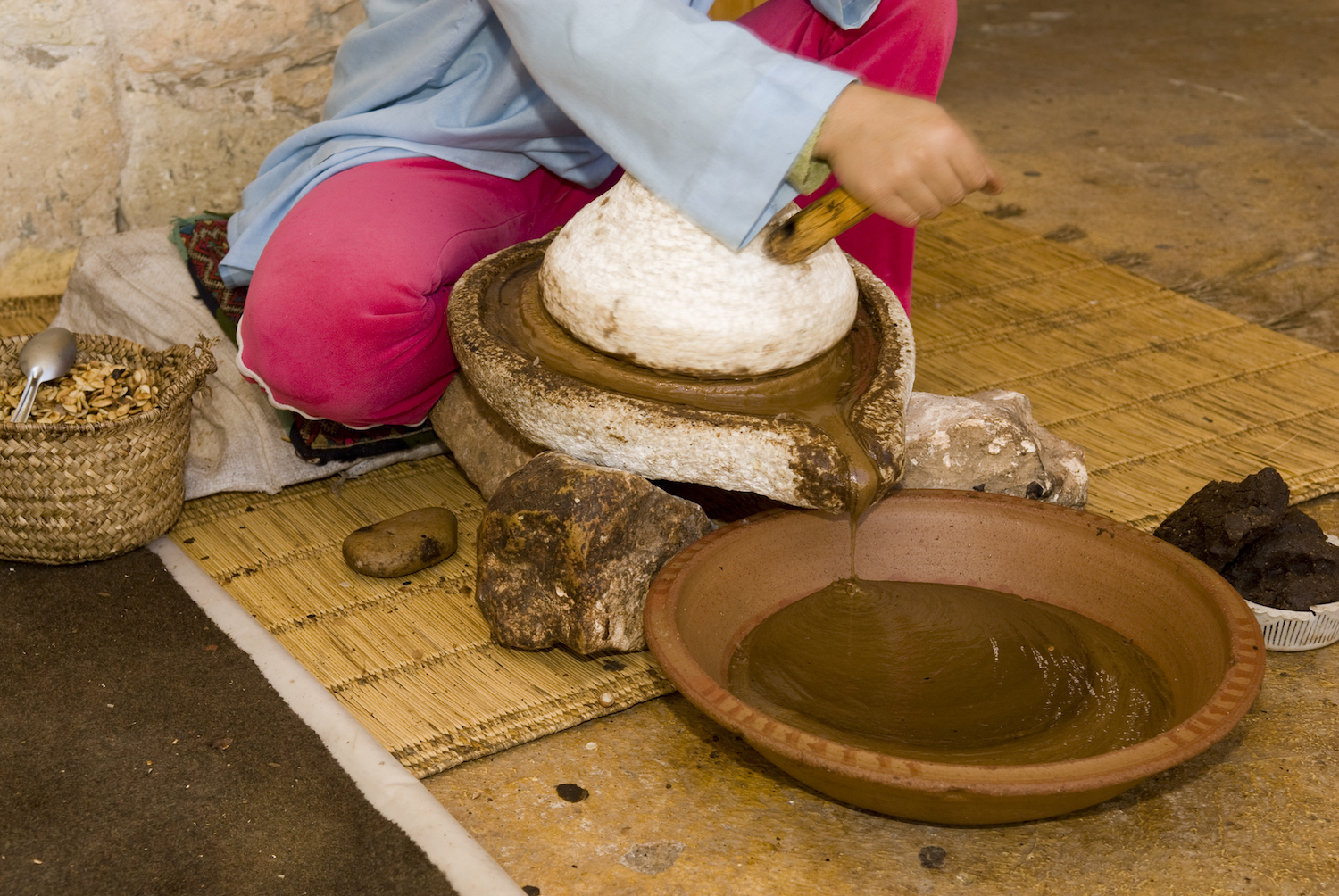
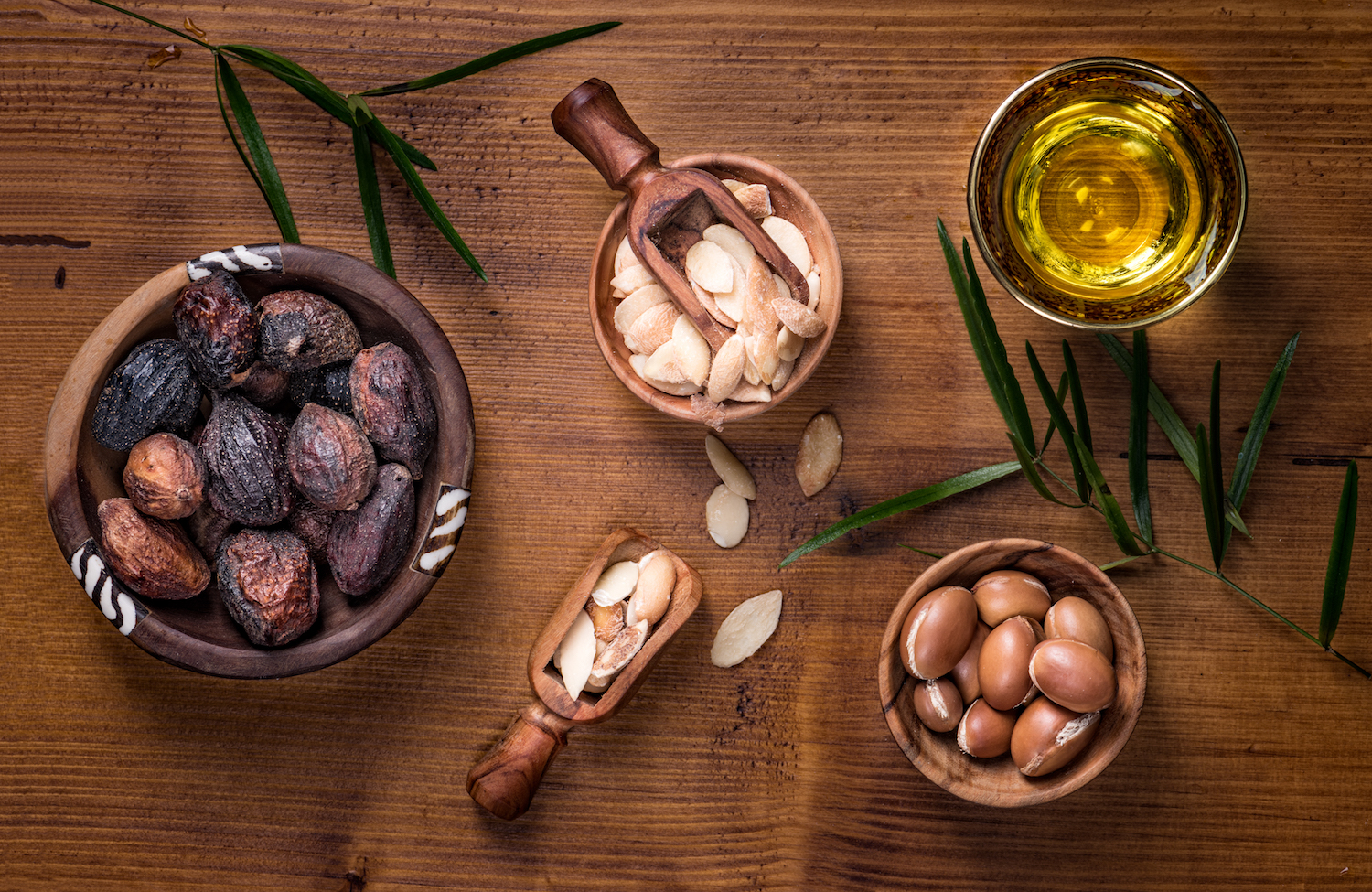
The average yield of argan fruits per tree is 8kg. The region of Essaouira produces between 1000 to 2000 tons of oil per year, corresponding very roughly to a local population of 60.000-120.000 trees, producing 142 million to 286 million fruits per year. According to various sources, the global production of argan fruits is estimated at 350.000 tonnes, or about 50 billion fruits. By some reports, Morocco’s argan oil exports bring around $6.5 million per year. So, it’s no wonder that argan oil remains one of the rarest and most expensive oils in the world due to the small and very specific growing area, but also for its health benefits.
Full of vitamin E and antioxidants used for skincare and haircare products, the argan oil is in high demand. It is worth about 5 times more than olive oil. If you are a woman reading this story, you know what I’m talking about!
The argan fruit is firm with a thick peel, and contains a bitter fleshy pulp around an almond-shaped nut that resembles a dried olive. That pulp is what the tree goats love. Others would say it's the shape and size of the acorn, anyway the climbing goats love them! It seems argan accounts for between 47 and 84 percent of a goat's diet, depending on the season.
The little, sleepy and quiEt baby goats
Well, enough about what the climbing goats do well or not! Not all of them love to climb and here are few pictures I loved taking.
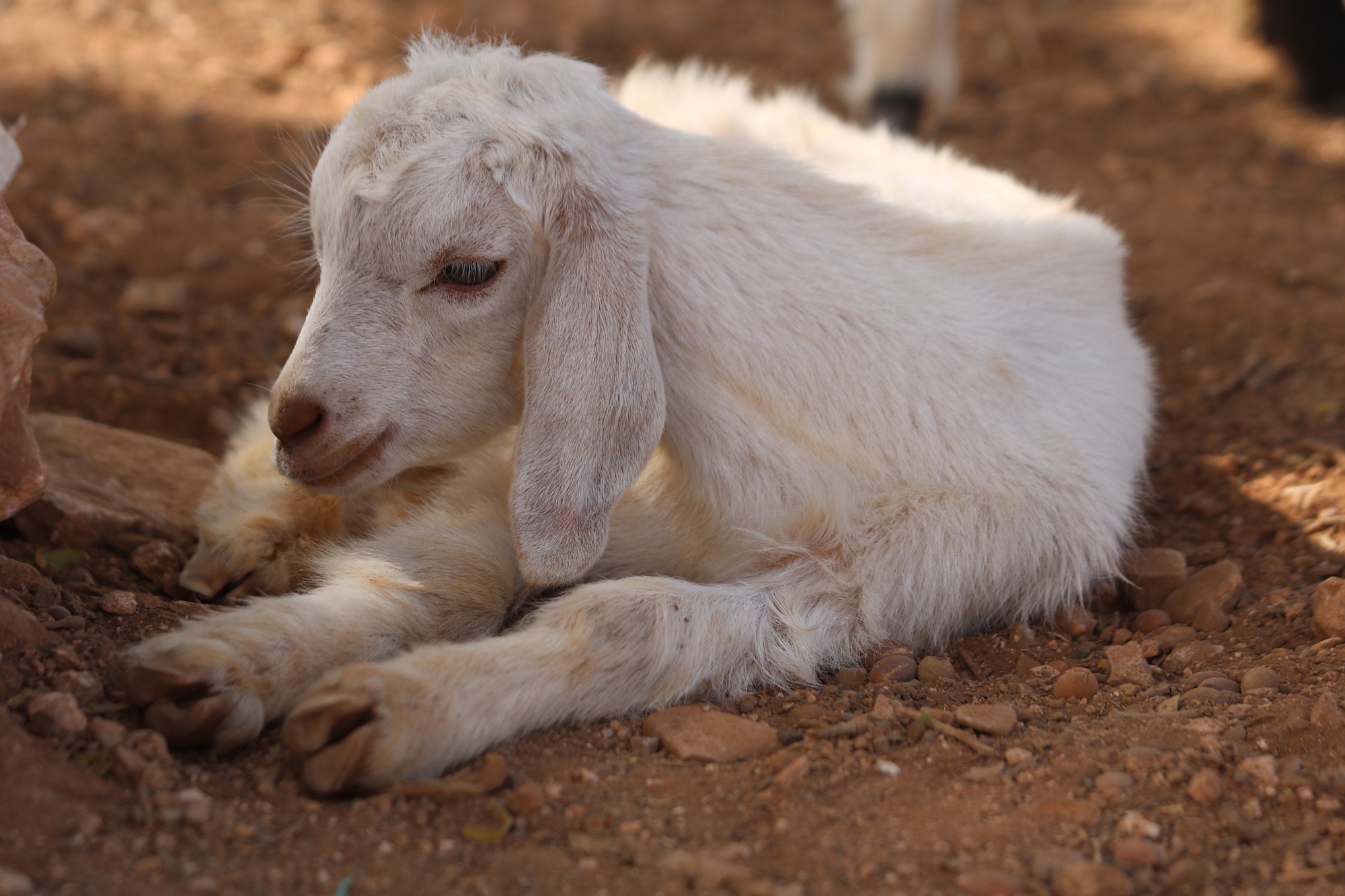
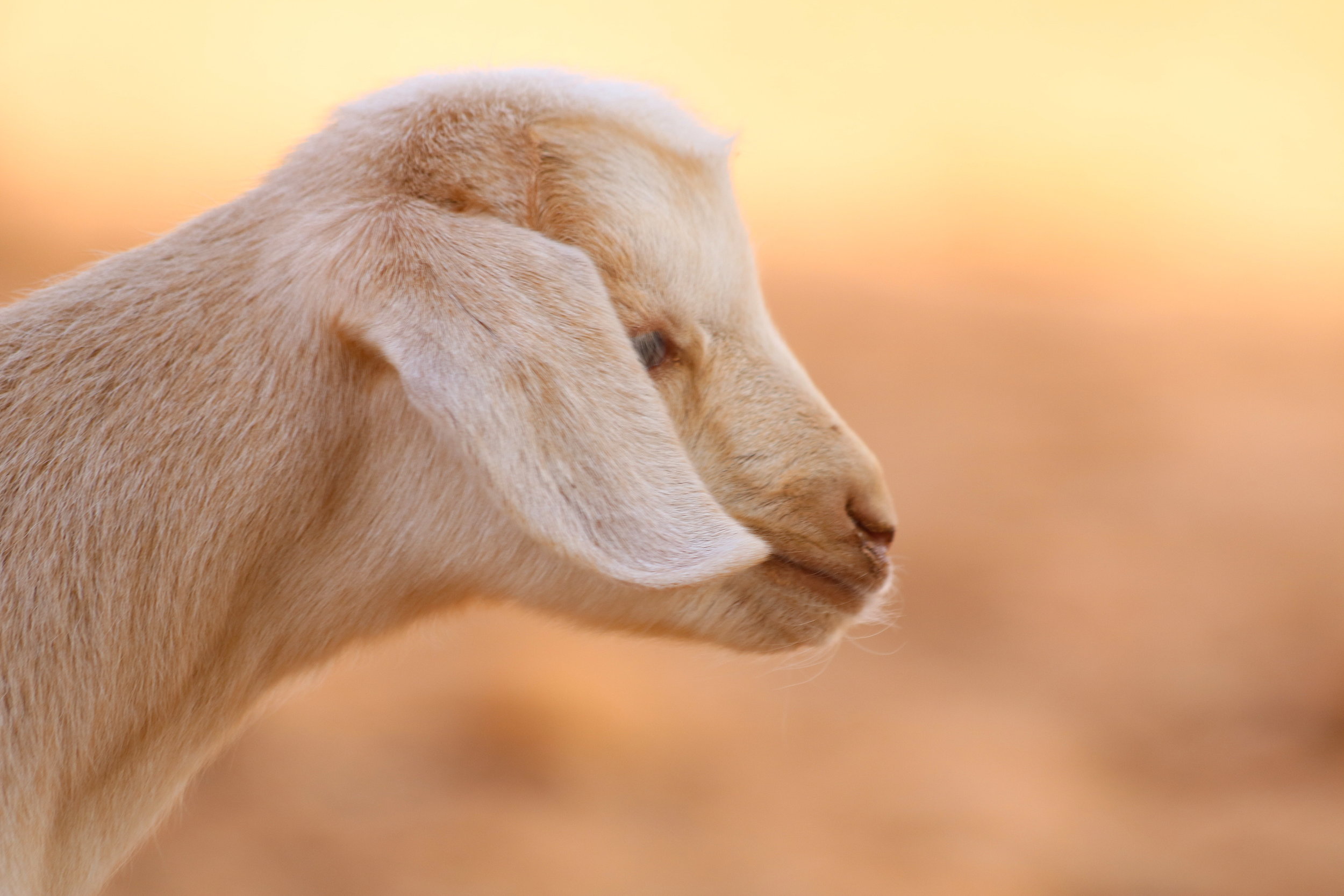
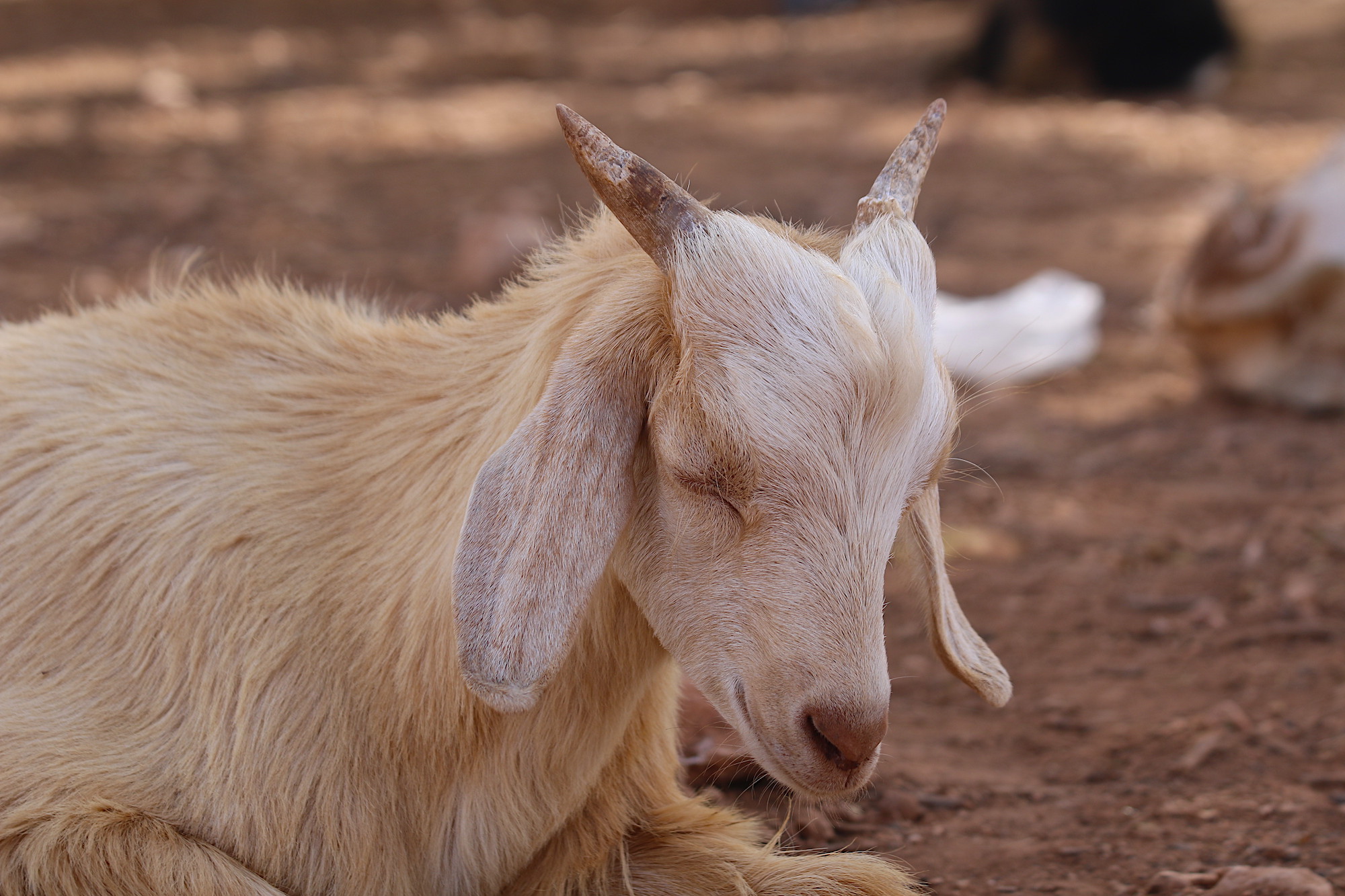


One last piece of advice in case you think about meeting the Moroccan climbing goats. Don't fall into the temptation of taking a fallen argan fruit as a souvenir! The local customs and laws govern the entitlement to gather the fruits. Not to mention the fact that farmers won’t be happy either! Just enjoy the view and be grateful for the experience. It’s one of a kind!
Author: Ana Maria Bogdan






Every year on April 22, people around the world celebrate Earth Day to raise awareness about the environmental issues facing our planet. The movement is coordinated by Earth Day Network, whose main goal is to “build the world’s largest environmental movement”.